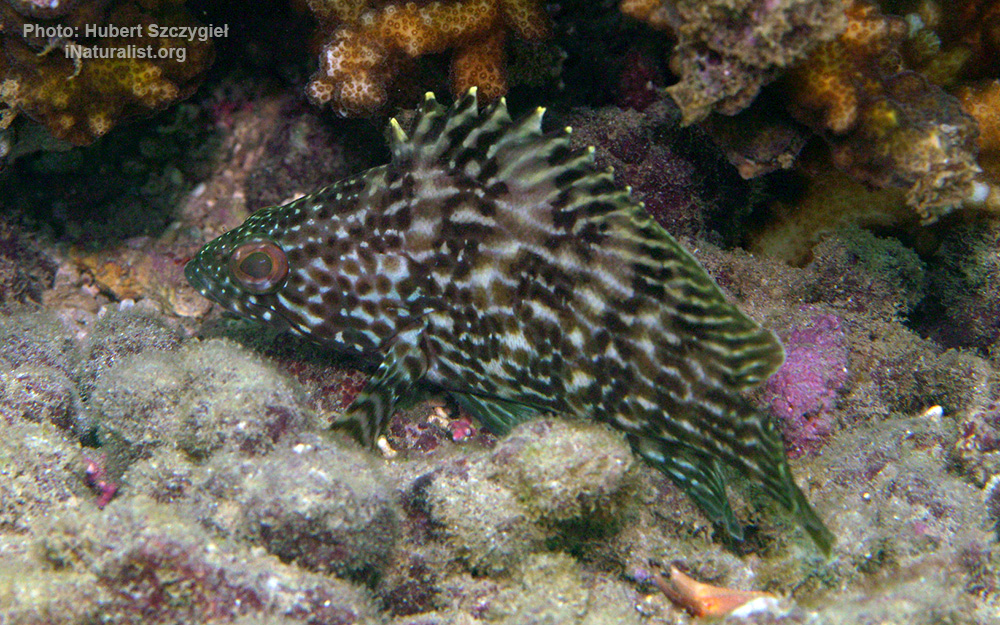Rivulated mutton hamlet
(Alphestes multiguttatus)

Classification
General data
Rocky reef and shallow-water species, cryptically colored and secretive. Sedentary during the day, hiding in crevices or lying among seaweed, and rely on their effective camouflage to escape detection (sometimes lying and partly covering itself with sand). Nocturnal predators feeding mainly on benthic crustaceans.
Max length : 30 cm TL
Eastern Pacific: Gulf of California to Peru.
The Rivulated Mutton Hamlet has a deep, strongly compressed body with a depth that is less than the head length and 32% to 37% of standard length. They have a rusty brown appearance with darker brown blotches forming irregular bars on their sides. They have large eyes and a short snout. Their pectoral fins have 5 or 6 regularly aligned transverse bars, a key to identification. Their anal fin has 2 spines and 9 rays, their caudal fin is rounded; their dorsal fin has 11 spines and 18 to 20 rays; and, their pectoral fins have 17 to 19 rays. They have 6 to 8 gill rakers on the upper limb and 14 to 16 gill rakers on the lower limb. They are covered with smooth scales.
The Rivulated Mutton Hamlet is a non-migratory shallow water species found at depths up to 30 m (100 feet). They reach a maximum of 30 cm (12 inches) in length. They are found hiding in rocky crevices, seagrass weed patches or partially covered with sand during the day and become active predators at night. They feed primarily on benthic crustaceans and rely on camouflage to escape detection. The Rivulated Mutton Hamlet is poorly studied with very limited information available about their lifestyle and behavioral patterns including specific details on age, growth, longevity, movement patterns, diet, habitat use, and reproduction.
The Rivulated Mutton Hamlet is easy to identify, although it is similar and almost identical to the Pacific Mutton Hamlet, Alphestes immaculatus (mottled brown spots along its sides; caudal fin heavily spotted; body width 36% to 43% of standard length).










